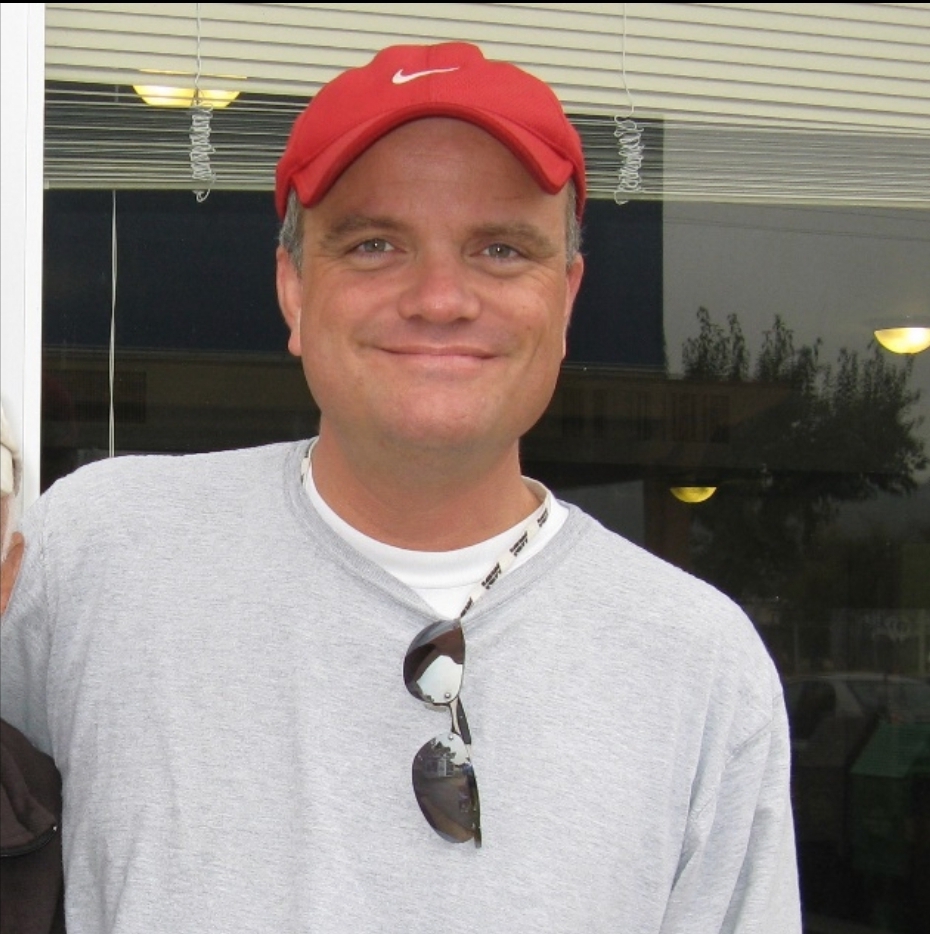Business
Christopher Dengler: Pioneering the Future of Web Services and .NET

Big players in tech have dramatically changed our lives for the better. Now we have systems and products that can do the most magical things possible. From computers to the World Wide Web, the pace of innovation in technology continues to increase every decade. Certain individuals stand out for their groundbreaking contributions that shape the way we interact with digital systems. One such luminary is Christopher Dengler, a former Senior Software Engineer at Microsoft Corporation. His impact on the world of technology is most notably recognized through his pivotal role in the development of Web Services and SOAP, integral components of the widely used .NET framework.
Microsoft Involvement:
Christopher’s journey into the world of technology began at Microsoft in 1996, and later with a Microsoft Certified Solution Developer (MCSD) credential in 1998. He quickly found himself at the forefront of innovation as a member of the Platform Strategy Group, a pet project initiated by the founder, Bill Gates. Initially, the two man team’s mission was to explore ways to enable disparate systems to communicate in real-time or near real-time over the Internet, laying the foundation for what would become SOAP and Web Services.
Christopher played a crucial role in the prototype work for Bill Gates and Steve Ballmer, actively contributing to the development of SOAP and Web Services between 1998 and 2001. This groundbreaking initiative aimed to create a standardized method for different software applications to communicate with each other seamlessly, a concept that has since become ubiquitous in modern technology.
The Birth of SOAP and Web Services:
In 1998, Christopher, as part of the Platform Strategy Group along with some notable technology leaders, embarked on a mission that would redefine the way systems communicated over the Internet. Their goal was to develop a protocol that allowed for real-time communication between disparate systems. The result of their efforts was SOAP (Simple Object Access Protocol) and Web Services.
SOAP became the cornerstone of Microsoft’s .NET framework, providing a standardized protocol for exchanging structured information in web services. This breakthrough allowed for interoperability between applications running on different platforms and languages, fostering a new era of seamless integration in the digital landscape.
His instrumental role in launching the first SOAP Toolkit via Microsoft in 1999 marked a significant milestone in the adoption of Web Services. This toolkit provided developers with the necessary tools to implement SOAP in their applications, further accelerating the widespread use of this transformative technology.
Impact on Industry Giants:
Christopher’s contributions have left an indelible mark on the technology landscape, with Web Services and SOAP becoming integral components of systems across various industry segments. Large corporations, including Amazon, eBay, Sony, Verizon, Volkswagen, Trans World Entertainment Corporation, Honeywell, US Airways, Costco, PetSmart, and American Express, have all benefited from Dengler’s groundbreaking work. The reality is, pretty much EVERY company in the world benefits from this technology now.
As the Chief Software Architect for US Airways, Christopher Dengler undertook a monumental task—overhauling the entire infrastructure, design, and functionality of usairways.com. This transformation marked US Airways’ initial foray into Service Oriented Architecture (SOA), a methodology that enhances flexibility and scalability by organizing software components as reusable services.
He adopted an innovative approach, and by introducing his expertise in SOA he succeeded in a total reconstruction of both the back end and front end of usairways.com. This project showcased his ability to not only conceptualize and design sophisticated architectures but also to implement them successfully in real-world scenarios.
Greenhouse: Microsoft’s Internal Idea Generation Tool:
Dengler played a key role in creating the architecture for Microsoft’s internal “Idea Generation Tool” called “Greenhouse.” This tool, conceived under Christopher’s guidance, delivered innovative ideas directly to Ballmer and was subsequently cultivated through various teams within Microsoft.
This innovative solution offered opportunities for individuals in one group to participate in possible future features in another group. Testing team members from Windows Media, for example could participate in dreaming up new features for Microsoft Outlook.
Dengler’s involvement in Greenhouse demonstrated his capacity to blend creativity with technological acumen, fostering an environment for generating and nurturing groundbreaking ideas within a tech giant like Microsoft.
Continued Influence and Industry Recognition:
Throughout his career, Christopher Dengler held numerous high-profile positions, including Chief Technology Officer (CTO), Chief Information Officer (CIO), architect, and Vice President. His dedication to pushing the boundaries of technology is evident not only in the creation of SOAP and Web Services but also in his ability to envision and implement novel solutions.
Dengler’s influence extended beyond Microsoft, as he was invited to participate as a member of the Board of Advisors for what would later become Amazon Web Services (AWS). This recognition speaks volumes about his expertise and foresight, as AWS has become a pivotal player in cloud computing and web services.
His legacy in the world of technology is firmly rooted in his pioneering work on Web Services and SOAP. His role in the creation of these fundamental technologies has not only shaped the .NET framework but has also become a linchpin in the way systems communicate globally. Christopher’ ability to innovate and drive technological advancements is evident in his contributions to US Airways, Microsoft’s Greenhouse, and his continued influence in the industry.
As we navigate a digital era dominated by interconnected systems, the impact of Christopher Dengler’s work reverberates through the billions of devices worldwide that rely on Web Services and SOAP. His story is a testament to the transformative power of individuals who dare to dream big, challenge the status quo, and leave an enduring imprint on the ever-evolving landscape of technology.
Business
The Key Components of a Successful Digital Marketing Strategy

In today’s hyper-connected world, a well-defined digital marketing strategy is essential for any business that wants to grow, build brand trust, and stay competitive. Whether you’re a local retailer, an eCommerce business, or a professional service provider, your online presence plays a major role in shaping how your audience perceives you. For example, industries like legal services are increasingly recognising the benefits of specialised digital marketing for law firms to attract and engage clients in an increasingly digital marketplace.
Below, we explore the key components that make up a successful digital marketing strategy—and how to align them with your business goals.
Clear Objectives and Measurable Goals
Every effective strategy begins with a clear understanding of what success looks like. Your goals might include increasing website traffic, generating leads, improving search engine visibility, or enhancing customer retention. Setting SMART (Specific, Measurable, Achievable, Relevant, and Time-bound) objectives helps ensure that each marketing activity contributes to tangible outcomes.
A Strong Brand Identity
Your digital marketing efforts should reflect a cohesive brand identity that resonates across every channel—your website, social media, email campaigns, and online ads. Consistent visual design, tone of voice, and messaging establish credibility and make your business instantly recognisable.
Search Engine Optimisation (SEO)
SEO remains the backbone of digital visibility. From on-page content optimisation and keyword targeting to technical site health and link-building, SEO ensures your business appears where customers are actively searching. Local SEO, in particular, helps businesses connect with audiences in specific geographic areas—an essential tactic for professionals and service-based businesses.
Engaging Content Marketing
High-quality, relevant content builds authority and nurtures relationships. Blogs, videos, infographics, podcasts, and whitepapers provide opportunities to educate, entertain, and inspire your audience. Great content not only boosts SEO performance but also establishes your brand as a trusted industry leader.
Social Media Engagement
Social platforms allow you to interact directly with your audience, showcase brand personality, and promote your services. The key is to use the right platform for your audience—LinkedIn for B2B engagement, Instagram for visual storytelling, or Facebook for community connection. Regular posting, active engagement, and data analysis are crucial for success.
Paid Advertising (PPC and Social Ads)
Paid campaigns can provide immediate visibility and lead generation, especially when combined with strong targeting and data insights. Tools like Google Ads and Meta Ads Manager allow you to reach specific demographics, remarket to previous visitors, and maximise ROI through ongoing optimisation.
Email Marketing and Automation
Email remains one of the most effective tools for nurturing relationships. Automated workflows can deliver personalised experiences, keeping leads engaged throughout the buyer journey. From newsletters to drip campaigns, consistent and value-driven communication is key.
Data Analytics and Continuous Optimisation
No digital marketing strategy is complete without performance tracking. Tools like Google Analytics, social insights, and CRM data reveal what’s working—and what’s not. Regularly reviewing metrics enables businesses to refine their strategy and continually improve results.
Final Thoughts
A successful digital marketing strategy is more than a checklist—it’s an evolving framework built on research, creativity, and constant learning. When each component works together seamlessly, your business can attract, engage, and convert customers more effectively, while maintaining a powerful and professional online presence.
-

 Tech5 years ago
Tech5 years agoEffuel Reviews (2021) – Effuel ECO OBD2 Saves Fuel, and Reduce Gas Cost? Effuel Customer Reviews
-

 Tech6 years ago
Tech6 years agoBosch Power Tools India Launches ‘Cordless Matlab Bosch’ Campaign to Demonstrate the Power of Cordless
-

 Lifestyle6 years ago
Lifestyle6 years agoCatholic Cases App brings Church’s Moral Teachings to Androids and iPhones
-

 Lifestyle5 years ago
Lifestyle5 years agoEast Side Hype x Billionaire Boys Club. Hottest New Streetwear Releases in Utah.
-

 Tech7 years ago
Tech7 years agoCloud Buyers & Investors to Profit in the Future
-

 Lifestyle5 years ago
Lifestyle5 years agoThe Midas of Cosmetic Dermatology: Dr. Simon Ourian
-

 Health7 years ago
Health7 years agoCBDistillery Review: Is it a scam?
-

 Entertainment6 years ago
Entertainment6 years agoAvengers Endgame now Available on 123Movies for Download & Streaming for Free
